In 2000, over 94% of U.S. households still had a landline. By 2023, that figure fell below 27% according to the CDC’s National Health Interview Survey. Businesses are following the same trajectory, shifting away from fixed lines toward internet-based telephony. The decline isn’t just cultural, it reflects real pain points with traditional systems: high costs per line, limited scalability, and the difficulty of supporting distributed teams.
Direct Inward Dialing (DID), delivered over SIP trunks, has become the alternative. Instead of relying on physical copper lines, companies can assign unique numbers virtually, route calls to any office or remote employee, and scale capacity without new infrastructure. For global businesses, the difference can mean 40–60% lower telecom spend and faster customer response times.
The rest of this guide compares DID with traditional phone lines head-to-head, covering costs, scalability, reliability, and integration—so you can decide which approach fits your business.
Key Takeaways
- Traditional PSTN and PRI systems require physical lines per number, driving high costs ($25–$50 per line or $400–$600 per PRI circuit) and limiting scalability.
- Direct Inward Dialing (DID) over SIP trunks offers virtual numbers, smart routing, and global presence, reducing telecom spend by 40–60% while improving flexibility.
- DID integrates seamlessly with cloud platforms like Microsoft Teams, CRM systems, and call analytics tools, features legacy phone systems can’t support.
- With DID, businesses can assign thousands of unique inbound numbers through a single trunk, scale capacity instantly, and maintain local caller IDs worldwide.
- DiDlogic delivers carrier-grade global DID coverage, SIP trunking with built-in failover, and secure SBC-protected infrastructure for cost-effective, scalable communications.
The Evolution of Business Telephony
For most of the 20th century, businesses relied on the Public Switched Telephone Network (PSTN), built on analog copper lines. It provided predictable call quality but required one physical line per number, limiting flexibility.
By the 1990s, Integrated Services Digital Network (ISDN) and Private Branch Exchange (PBX) systems allowed companies to bundle up to 23 channels on a single Primary Rate Interface (PRI). This cut costs but still depended on physical circuits.
The 2000s marked the shift to Voice over Internet Protocol (VoIP). Calls moved to internet-based networks, reducing costs and enabling features like call forwarding and voicemail-to-email. Adoption accelerated: the global VoIP market has grown at a compound annual growth rate (CAGR) of around 10% since 2010 (source: Fortune Business Insights).
Today, businesses are moving toward Direct Inward Dialing (DID) and SIP trunking. Unlike legacy circuits, DID numbers are assigned virtually and managed through a single trunk. Yet, legacy systems remain: as of 2022, about 31% of U.S. businesses still used some form of PSTN or ISDN lines (source: FCC).
What is Direct Inward Dialing (DID)?
How DID Works (Technical Overview)
DID assigns individual phone numbers to employees or departments without requiring a separate physical line for each. Calls enter through a SIP trunk or PBX, then get routed directly to the right extension.
DID call flow (simplified):
Customer dials DID number → VoIP provider routes the call → PBX/SIP trunk directs it → employee’s extension or softphone rings.
This setup allows thousands of unique numbers to run through a single trunk, reducing costs while maintaining flexibility.
Core Features of DID
- Direct numbers at scale: Each employee or team can have a unique inbound number without adding physical lines.
- Smart routing: Calls can be routed by time of day, caller location, or skill group.
- Local presence: Businesses can buy local numbers in multiple countries, showing local caller IDs to customers.
Common Business Use Cases
- SaaS support teams: A cloud software company with 200 employees can assign every support rep a unique DID number. Customers reach the right agent directly, reducing wait times.
- BPO and outsourcing firms: A Manila-based call center serving European clients can rent DID numbers in Germany, France, and Spain. Customers dial a local number but reach offshore agents seamlessly.
- Remote-first companies: A U.S. startup with employees in five states can distribute DID numbers by department—sales, billing, support—without building physical infrastructure.
In Asia and Europe, outsourcing firms using DID report 30–50% savings compared to maintaining PRI circuits (source: Deloitte Global Telecom Report).
How Traditional Phone Lines Operate
Legacy Technology Overview
Traditional telephony runs on the Public Switched Telephone Network (PSTN), a global web of copper lines and circuit switches. Each phone number requires a dedicated line, creating high infrastructure costs. By the 1990s, Primary Rate Interface (PRI) technology allowed companies to bundle up to 23 voice channels into one circuit, improving efficiency but still tethered to physical cabling.
Benefits & Limitations
- Benefit: Landlines operate independently of the internet, maintaining service during broadband outages. Call quality is predictable, especially in regions with strong PSTN infrastructure.
- Limitations: Each line has a fixed monthly cost, scaling requires physical installations, and maintenance of copper networks is declining as carriers phase them out. Flexibility is minimal compared to virtual systems.
Industries Still Using Landlines
- Healthcare: Some hospitals retain PSTN lines for compliance and emergency fallback.
- Rural businesses: Areas with weak broadband rely on copper lines for reliability.
- Finance: Institutions keep landlines as a backup against internet disruptions.
The trend, however, is downward. By 2023, less than 27% of U.S. households still had a landline, compared to over 94% in 2000 (source: CDC). Businesses are following suit, retiring legacy circuits as broadband coverage improves.
Key Differences (DID vs. Landlines)
Cost & Scalability
Direct Inward Dialing uses virtual numbers hosted on SIP trunks. Businesses pay per channel and can scale numbers almost without limit. Traditional PSTN requires per-line subscriptions, which makes scaling expensive.
Cost Comparison (U.S. averages):
| Service Type | Monthly Cost per Line/Channel | Scalability |
| PSTN Line | $25–$50 per line | One line = one number |
| PRI Circuit | $400–$600 (23 channels) | Limited to circuit capacity |
| DID over SIP | $1–$2 per channel | Virtually unlimited |
Call Quality & Reliability
PSTN provides consistent quality and low latency within its geographic reach. Calls don’t rely on internet bandwidth, making them stable in areas with poor connectivity.
DID relies on internet performance, but with quality of service (QoS) settings and redundant providers, latency can stay under 150 milliseconds, the ITU benchmark for acceptable VoIP performance. Many providers also add failover routing to reduce downtime risks.
Flexibility & Integration
DID integrates with cloud platforms like CRMs, call analytics, and unified communications tools. For example, a sales team using Microsoft Teams can assign DID numbers directly to individual reps, enabling click-to-call and call logging within the CRM.
PSTN systems lack this adaptability. Adding integrations requires costly on-premise hardware, limiting their value in hybrid or remote work models.
Why DID Outperforms Traditional Lines
Direct Inward Dialing isn’t just a modern replacement for copper lines—it’s the system most enterprises now choose when planning for the next decade. Global companies report 40–60% lower telecom costs compared to maintaining PRI circuits or PSTN lines (source: Deloitte). The savings come from paying per channel, not per physical line, and avoiding expensive infrastructure rollouts in each location.
Management is centralized. Instead of juggling multiple local carriers, businesses can oversee all numbers, extensions, and routing rules from a single online portal. This allows IT teams to provision new numbers instantly and route calls based on time zones or skill sets.
Portability adds another layer of advantage. DID numbers can move between providers and regions without disrupting operations. For multinational firms, this creates a consistent global presence with local caller IDs in dozens of markets.
Case in point: A European BPO with call centers in Spain, Poland, and the Philippines replaced its PRI circuits with DID and SIP trunks. By consolidating carriers into one global provider, they reduced telecom costs by 48% in the first year and gained the ability to spin up new country numbers in under 24 hours.
Challenges & Considerations with DID
Adoption of DID brings major gains, but it also requires careful planning. Internet reliability is the first concern. Voice traffic should run on business-grade fiber with at least one LTE or 5G backup to prevent outages.
Security is another priority. SIP attacks and toll fraud can target unprotected trunks. Session Border Controllers (SBCs) and firewalls act as gatekeepers, blocking malicious traffic and safeguarding call data.
Vendor selection often determines long-term success. Not all providers deliver carrier-grade infrastructure. The right choice should offer global Points of Presence (PoPs), regulatory compliance in key markets, and 24/7 monitoring. Without that foundation, scaling internationally can become risky and inconsistent.
How to Decide: DID, Landlines, or Hybrid
The right choice depends on company size, infrastructure, and compliance needs. Small firms in rural areas without IT support may still benefit from landlines or a hybrid setup. Growing businesses with multiple offices or remote staff gain the most from DID, thanks to virtual scalability and integrations with cloud platforms. Highly regulated industries, such as healthcare or finance, often prefer a hybrid model—keeping landlines for compliance while shifting the majority of calls to SIP trunks.
Decision Matrix:
| Business Type | Recommended Setup | Reasoning |
| Small, rural, no IT staff | Landline or Hybrid | Reliability during outages, simple setup |
| Growth-stage, multiple sites | DID + SIP Trunks | Scalable, cloud-ready, global presence |
| Compliance-heavy (health/finance) | Hybrid (PSTN + DID) | Meets regulatory needs with modern features |
Conclusion
Direct Inward Dialing offers cost savings, portability, and global scalability that traditional phone lines can’t match. Landlines still provide stability, but they’re becoming increasingly outdated as networks phase out copper infrastructure. For most companies, the smarter long-term move is DID—supported by a backup plan where necessary.
Audit your current telecom spend against DID’s potential savings and scalability. If you’re ready to test the difference, try a pilot program before committing.
Test DIDlogic’s global DID coverage and SIP trunks with a free pilot today.
FAQs
Can DID numbers be used internationally?
Yes. Companies can purchase local numbers in multiple countries and present them with local caller ID.
How does DID handle call forwarding across multiple locations?
Calls can be routed instantly to different offices or remote staff through SIP trunks or PBX rules.
What happens if the internet goes down with DID?
Failover routes can redirect calls to backup locations, mobile numbers, or PSTN lines until service is restored.
Can businesses migrate from landlines without replacing PBX?
Yes. Most PBX systems connect to SIP trunks with a gateway, allowing gradual migration.
How does call quality compare between DID and PSTN?
PSTN is consistently stable, but DID matches it when QoS is configured and latency stays under 150 ms.
Are DID numbers protected from spam/fraud?
Reputable providers use SBCs, firewalls, and anti-fraud monitoring to filter malicious traffic.
Is a hybrid DID + PSTN setup possible?
Yes. Many firms maintain landlines for backup while running most calls over DID.
Further Reading


